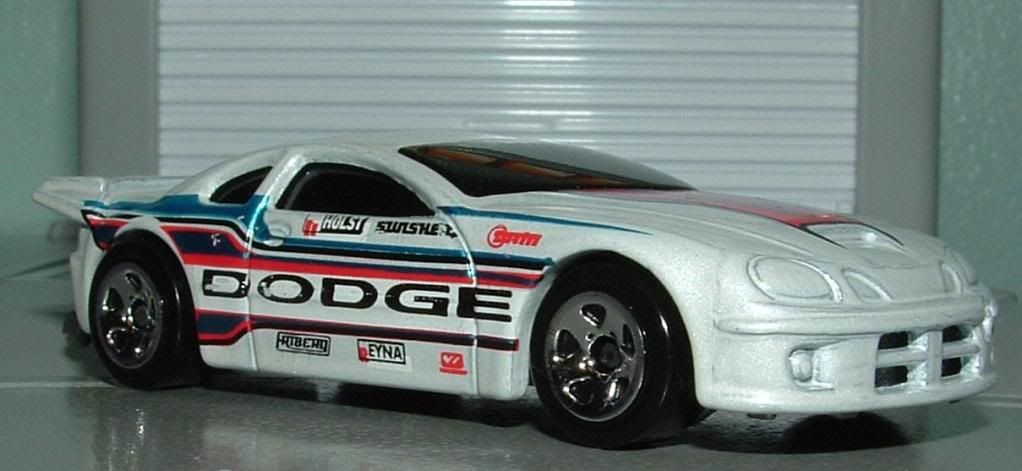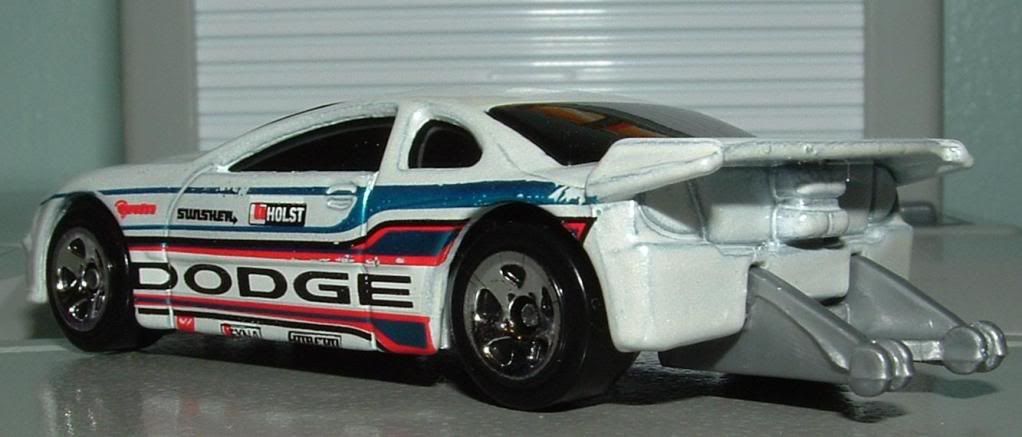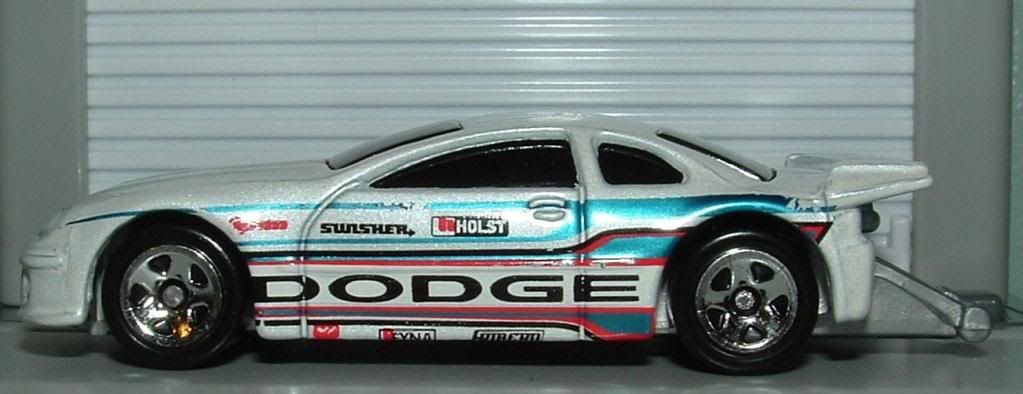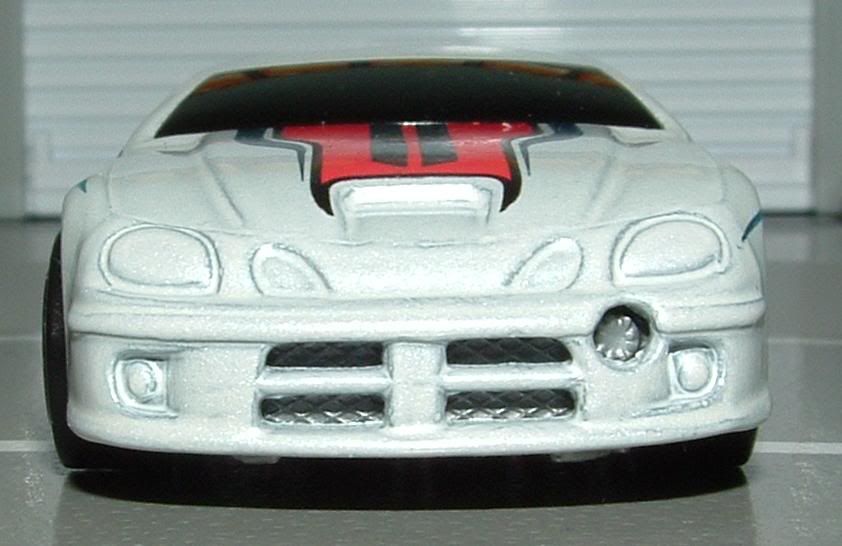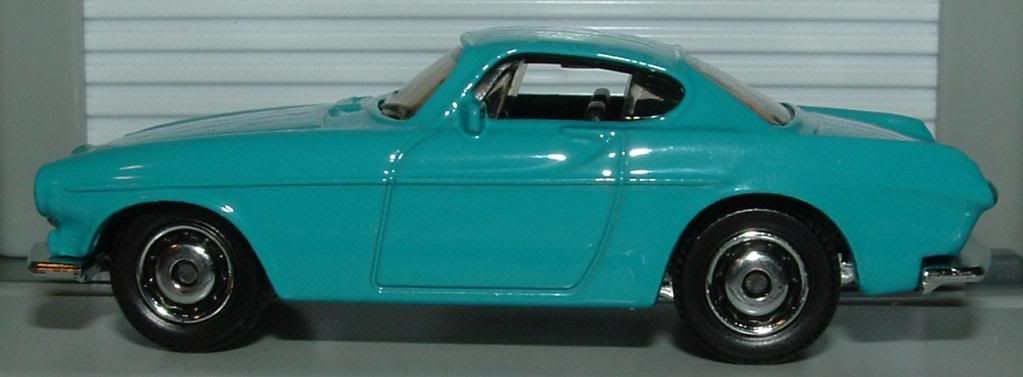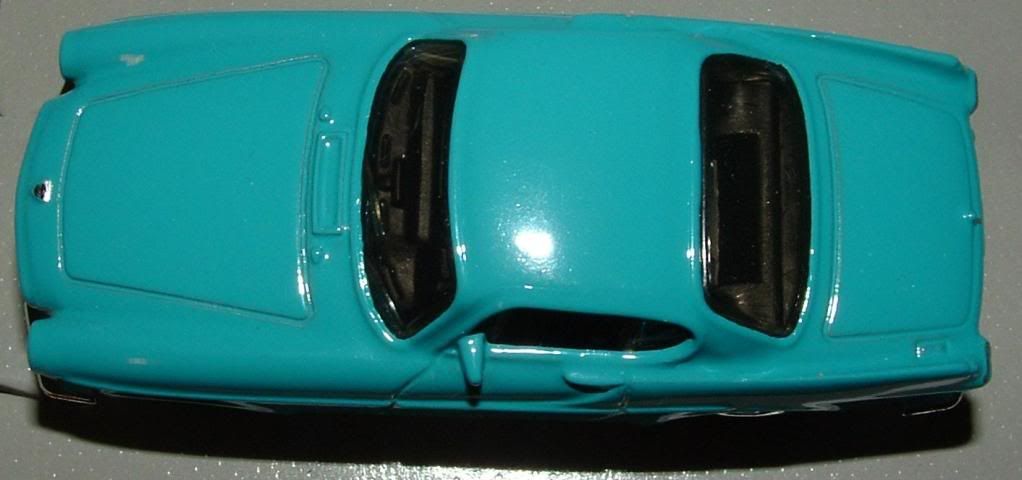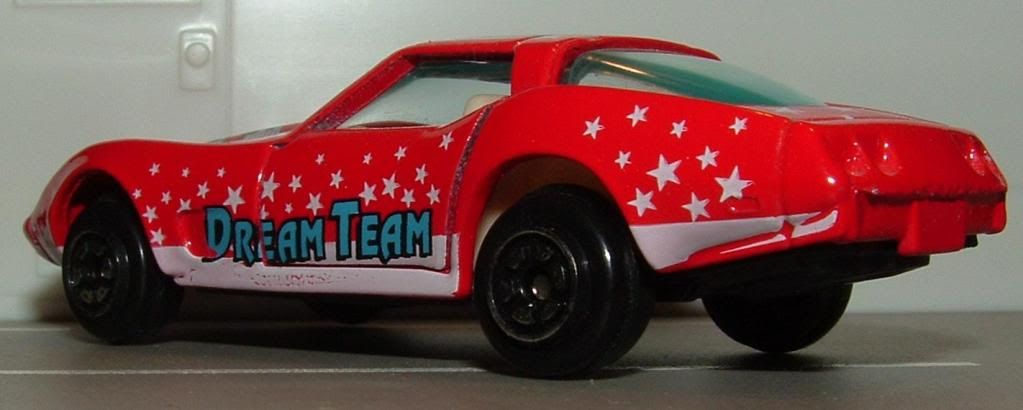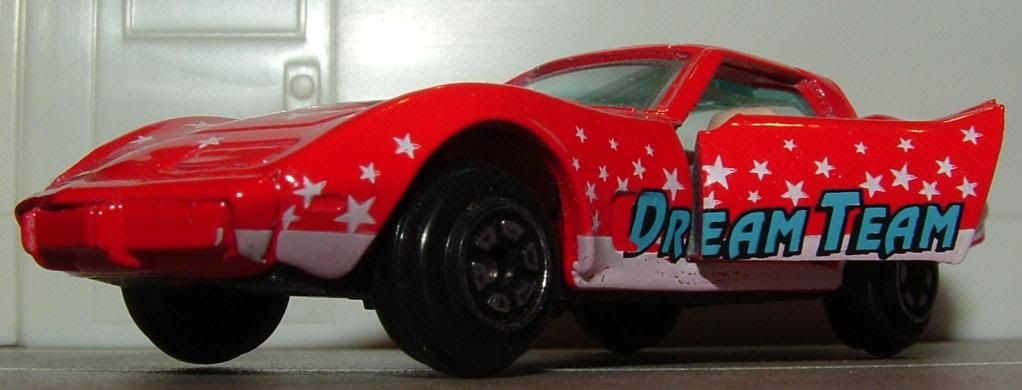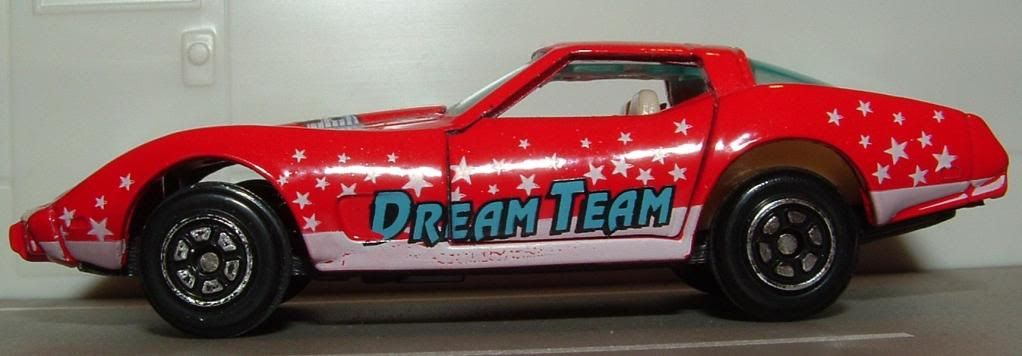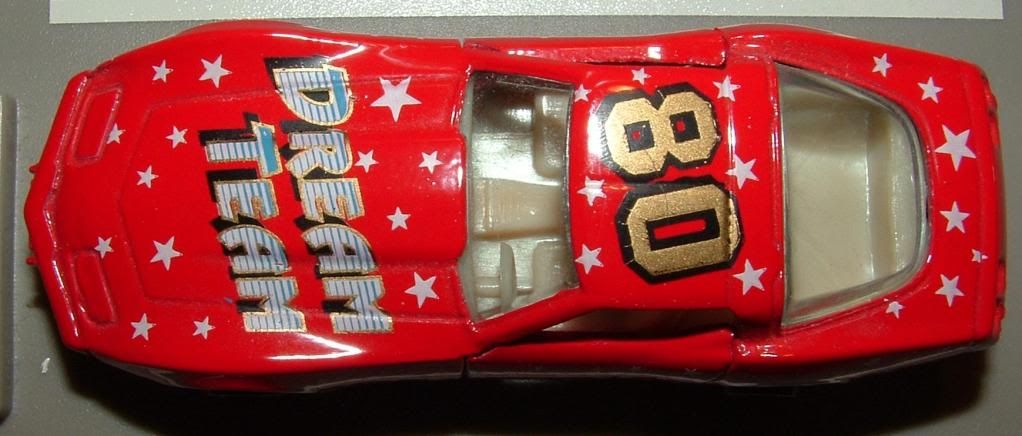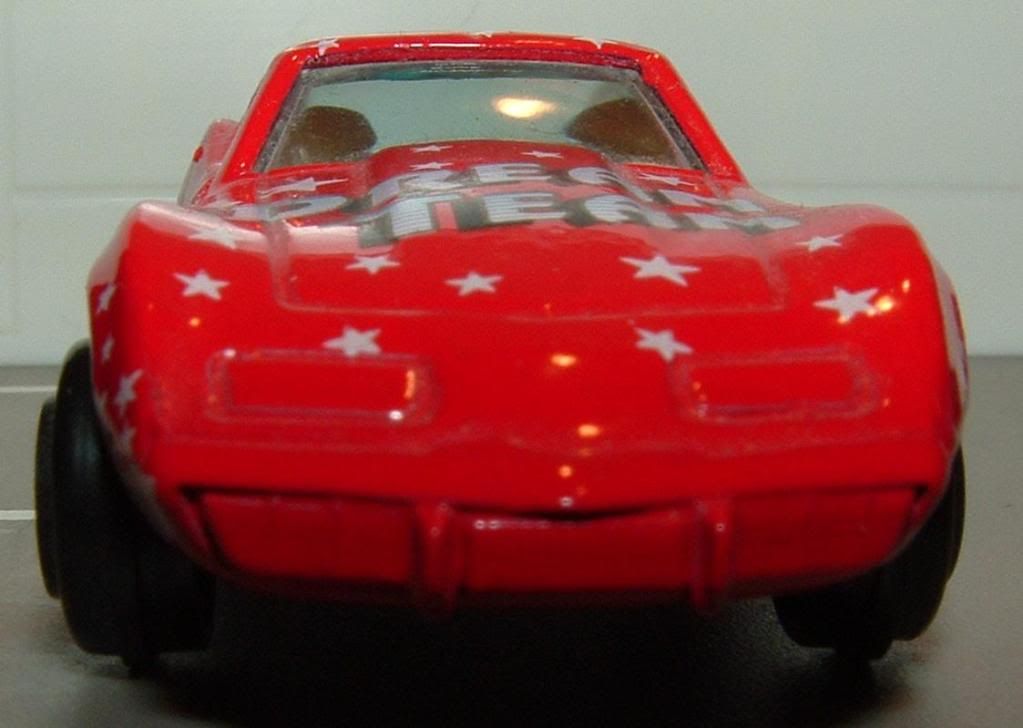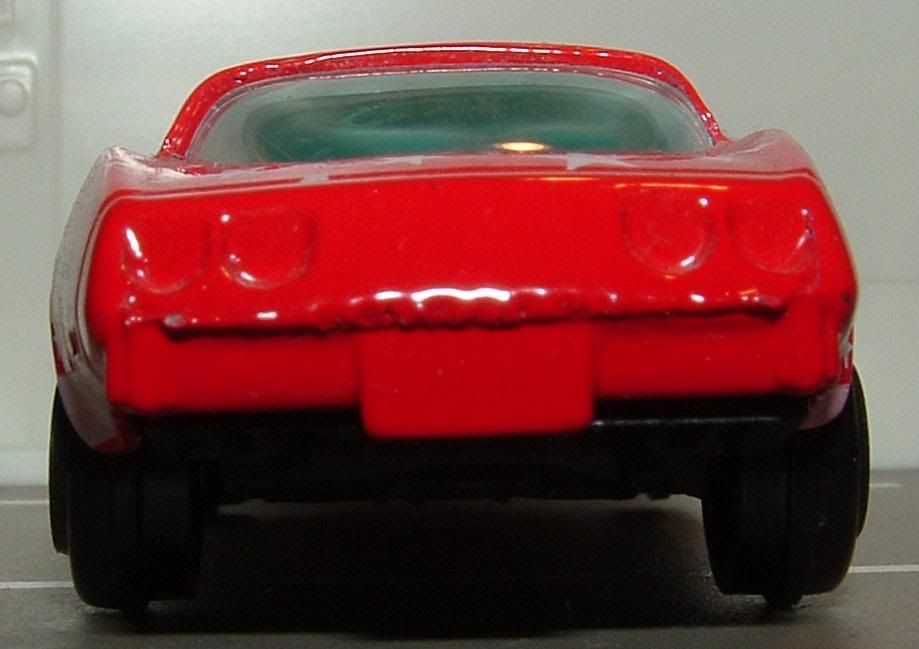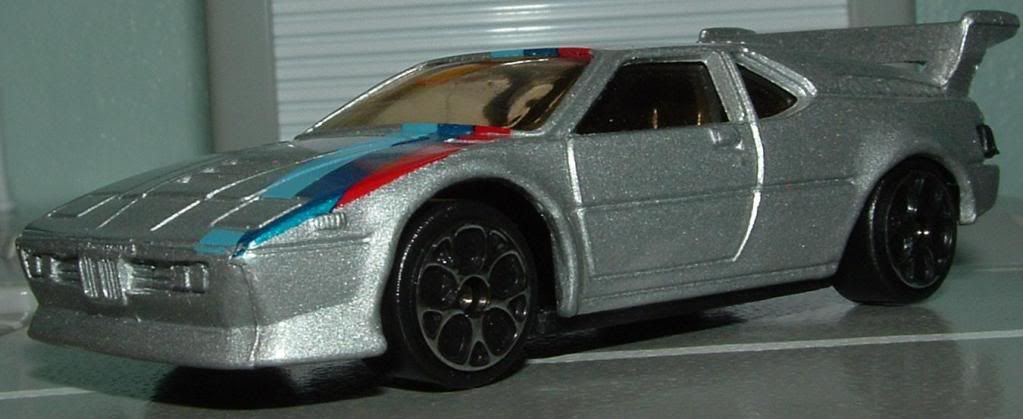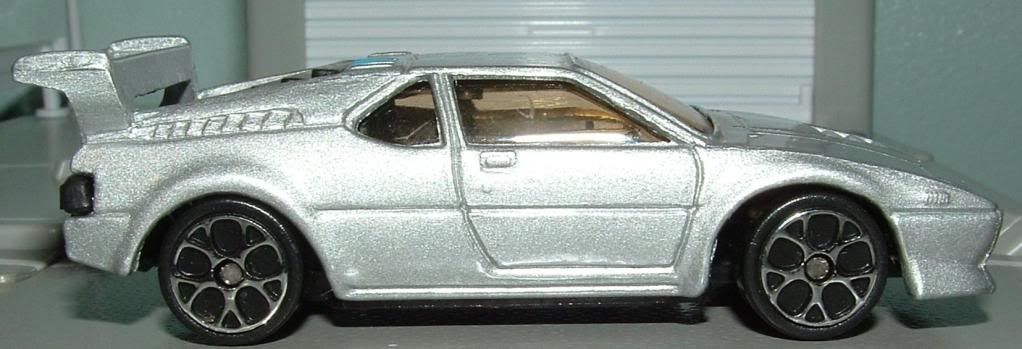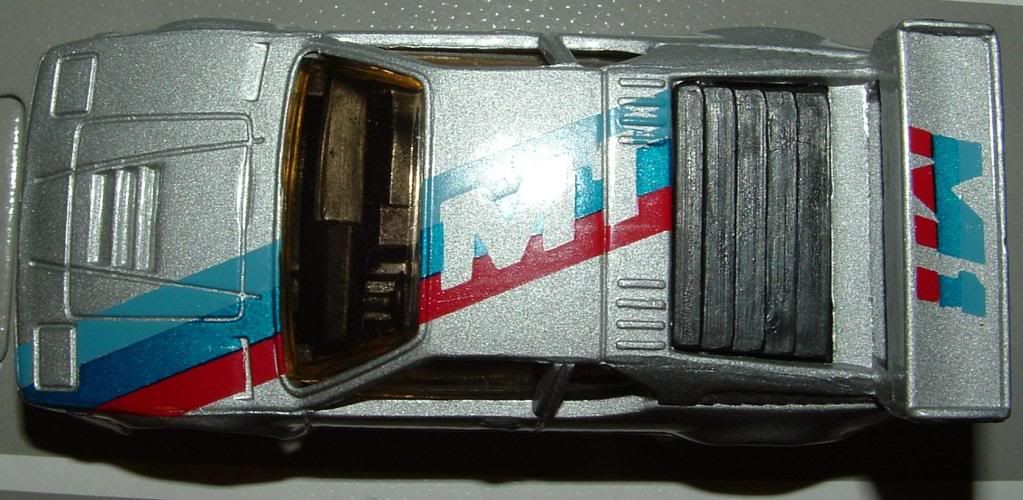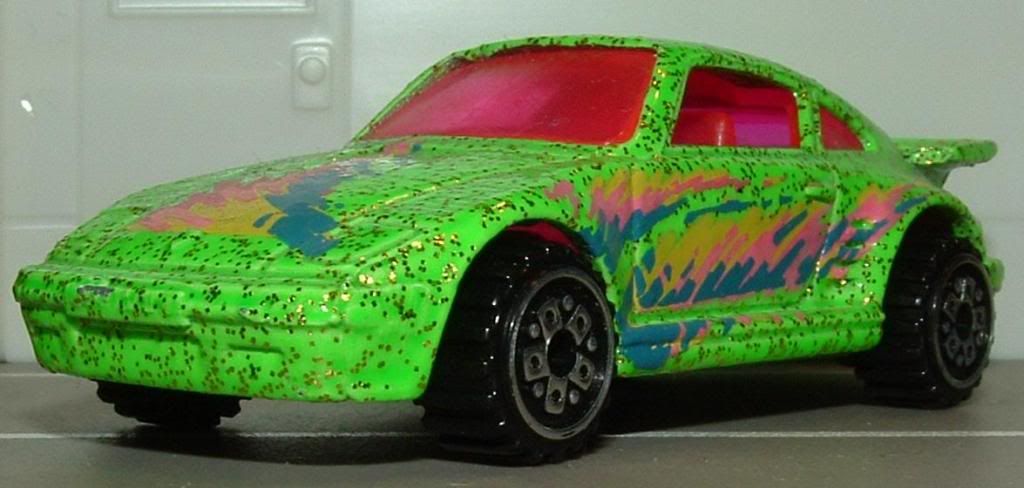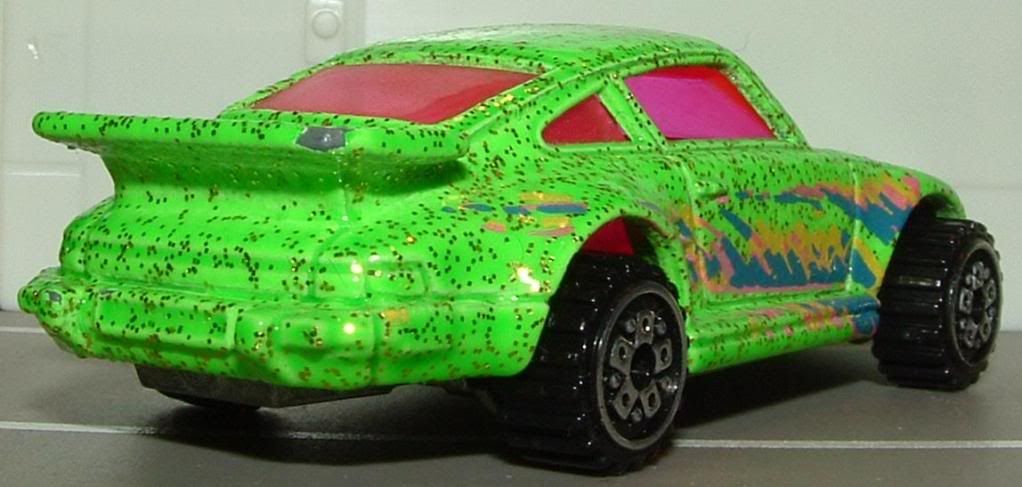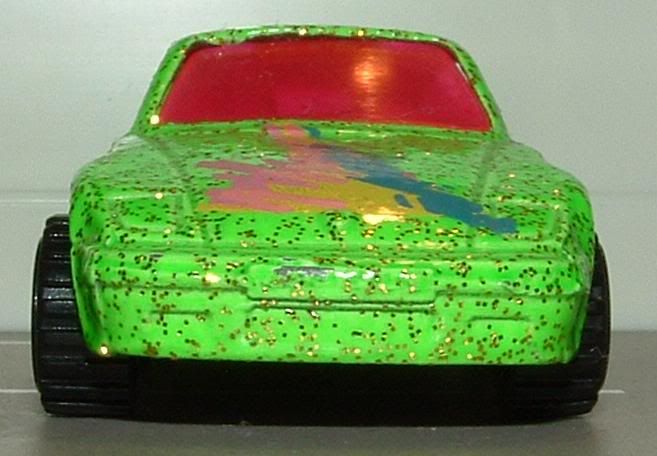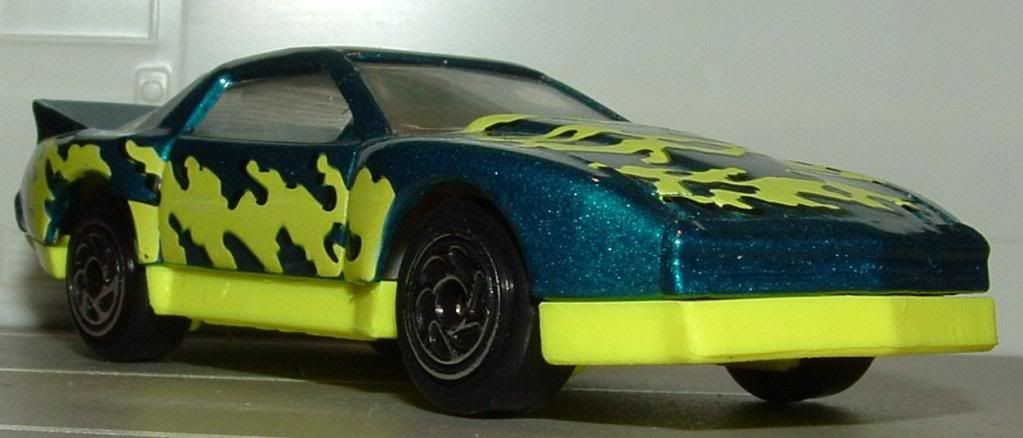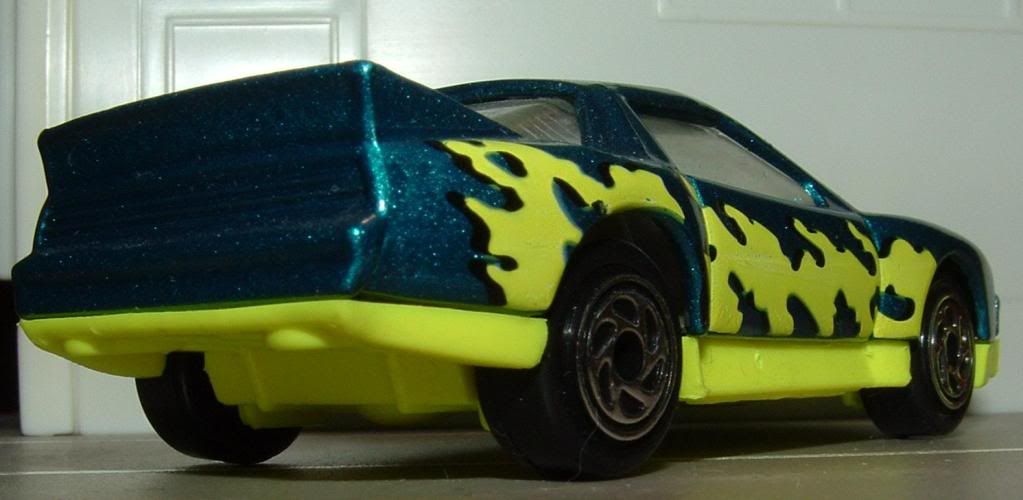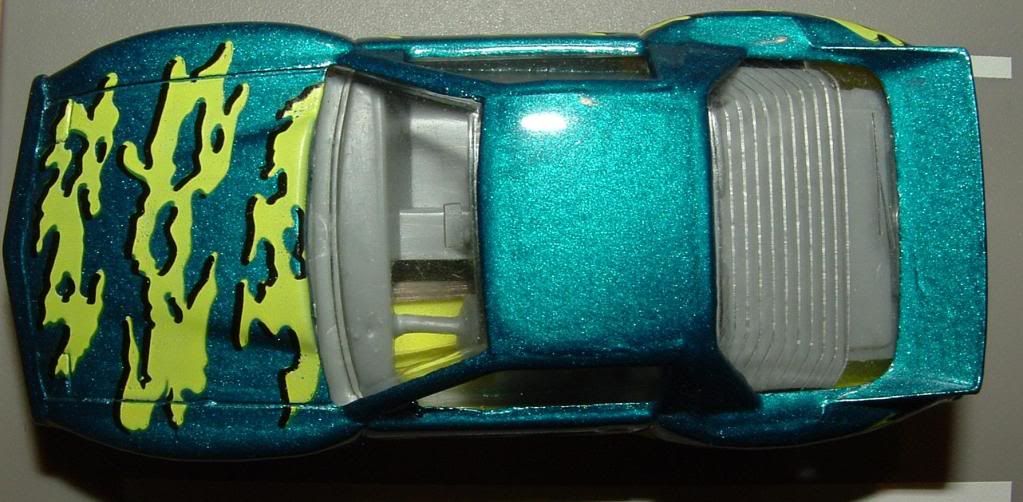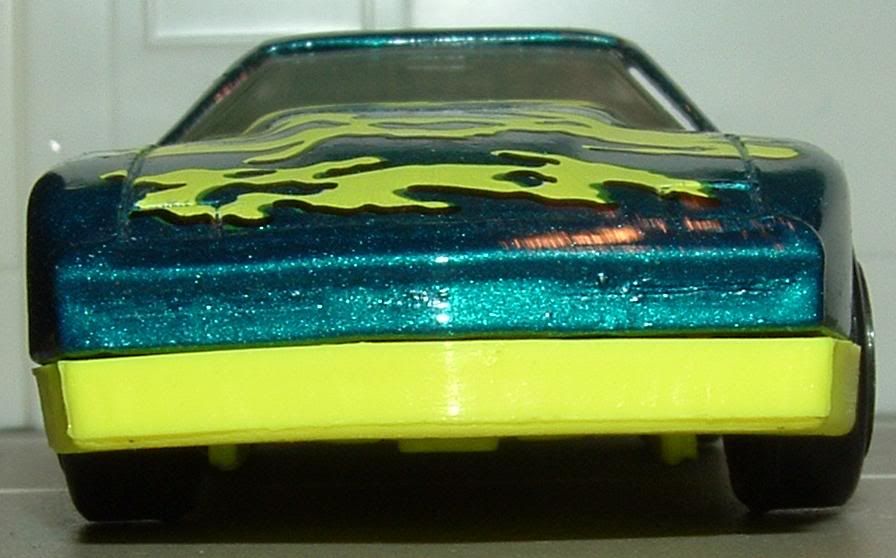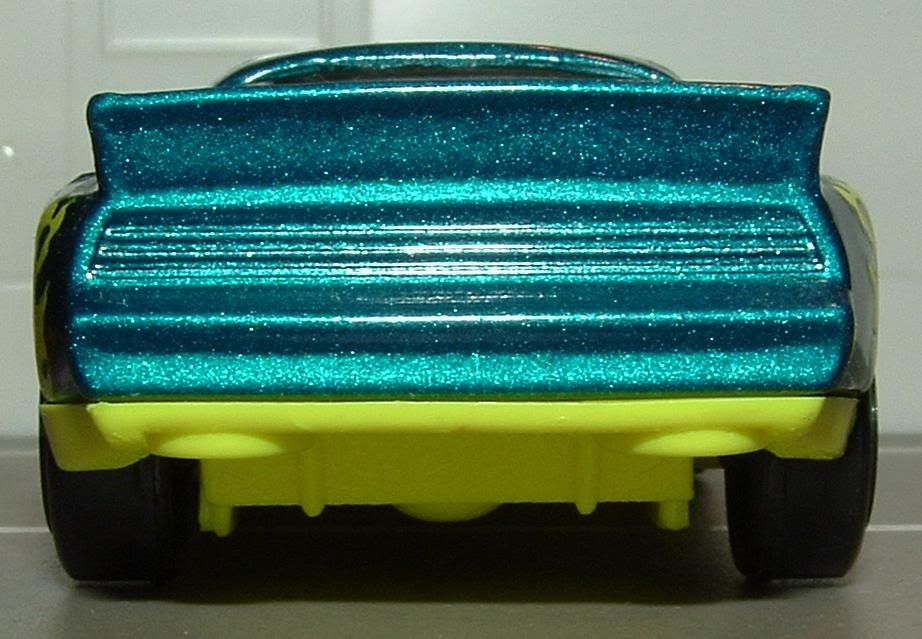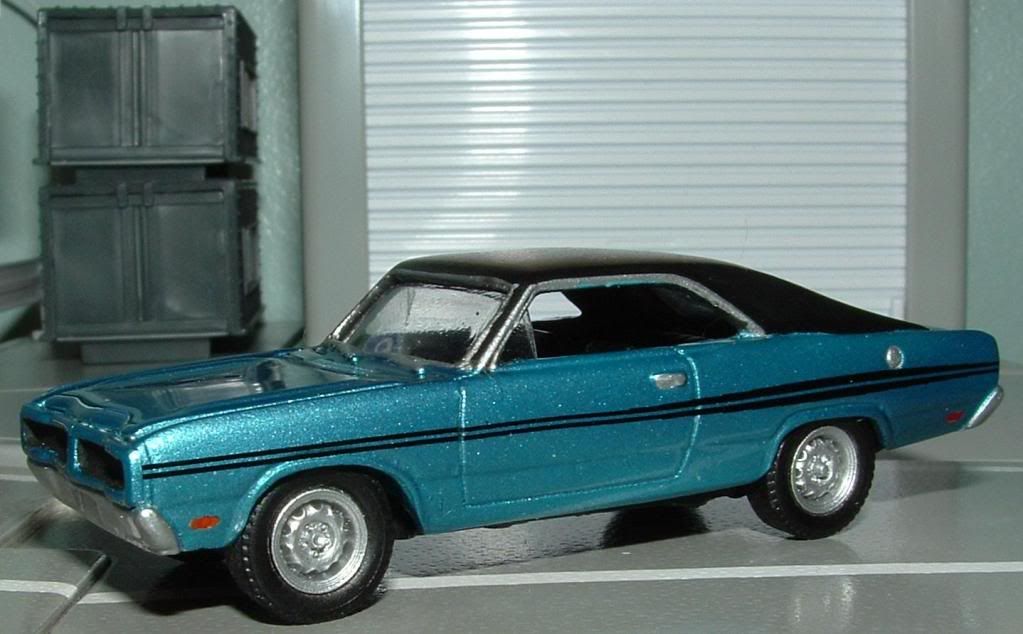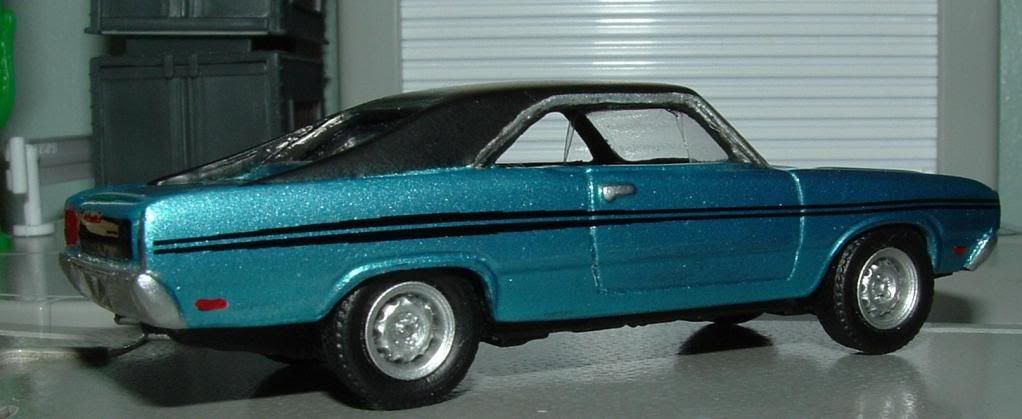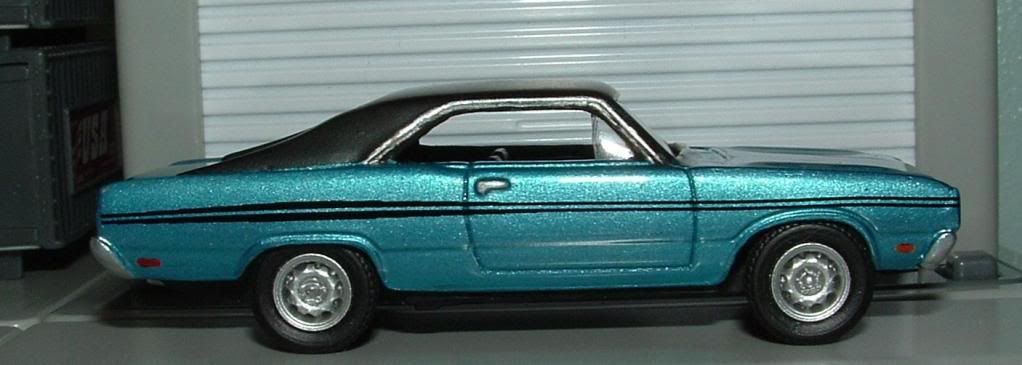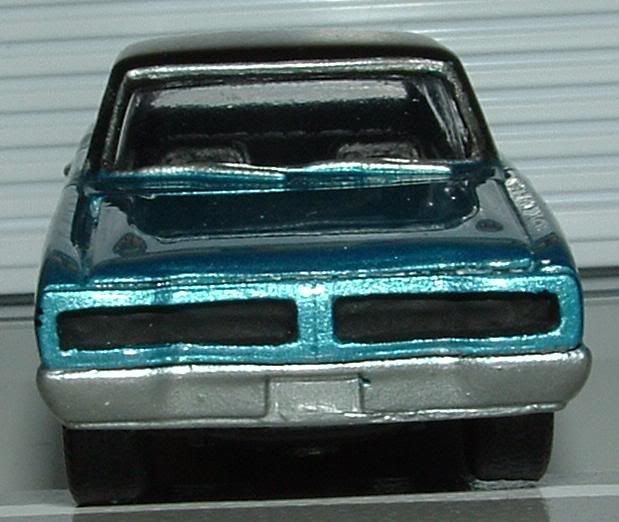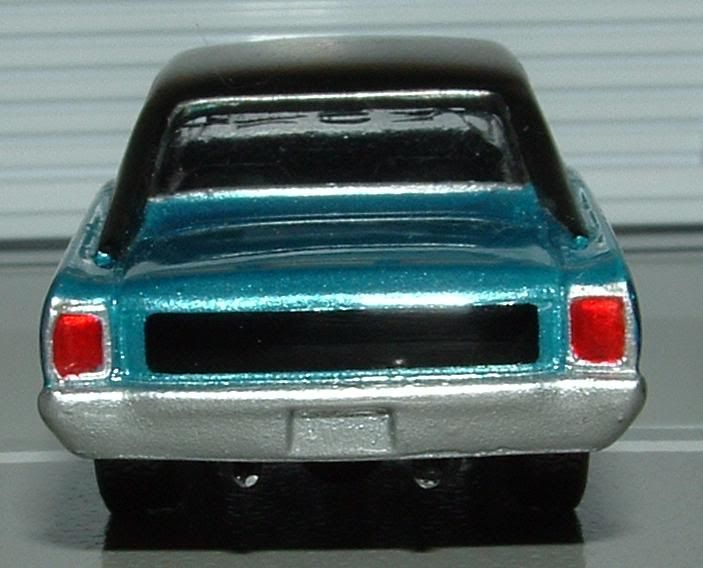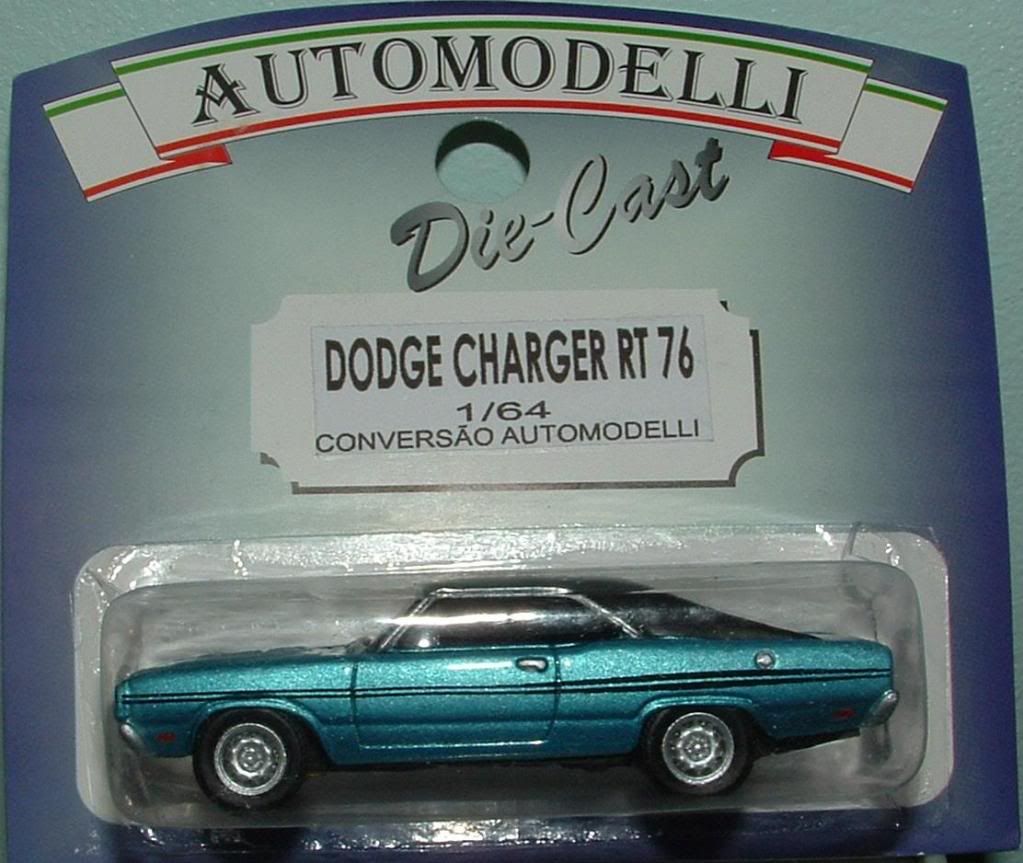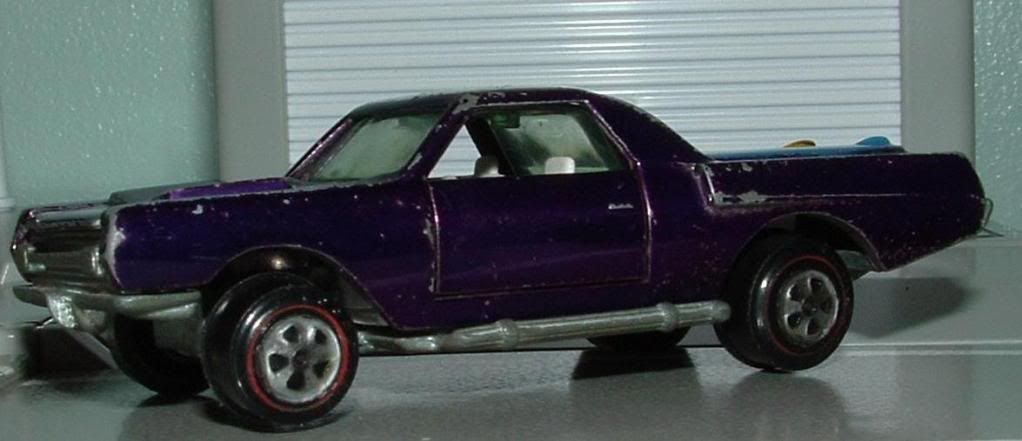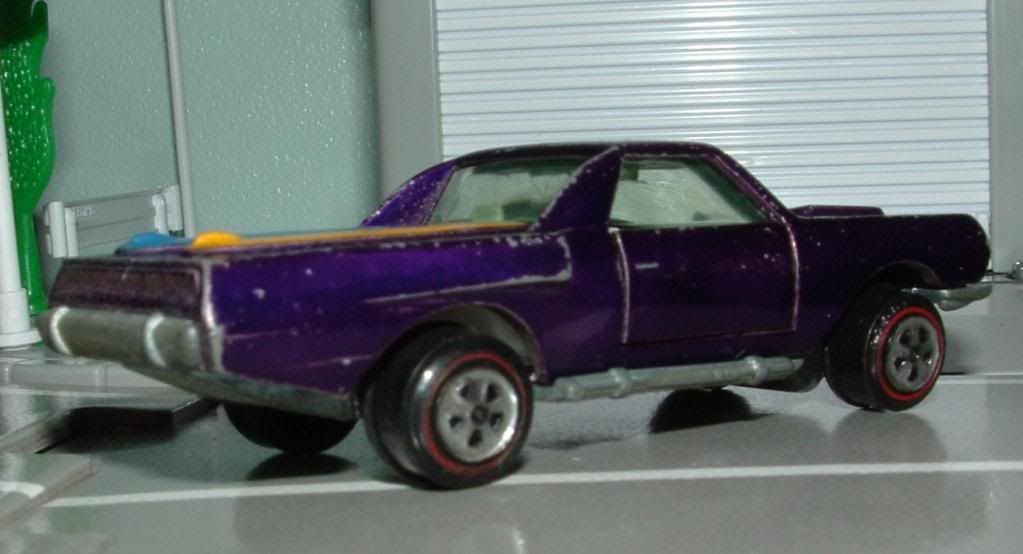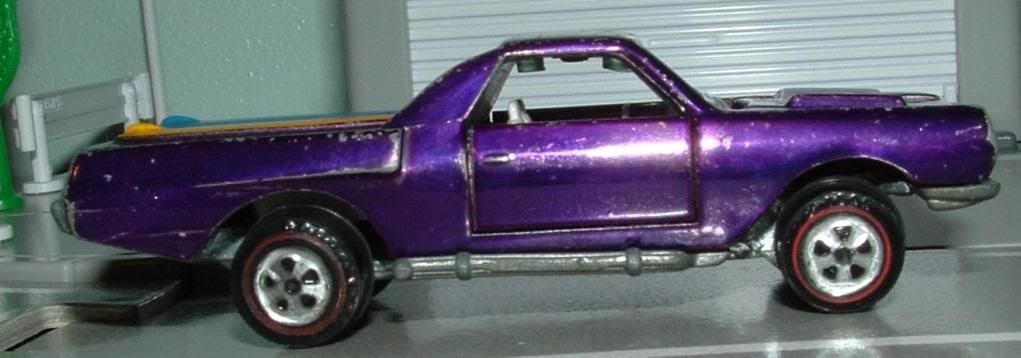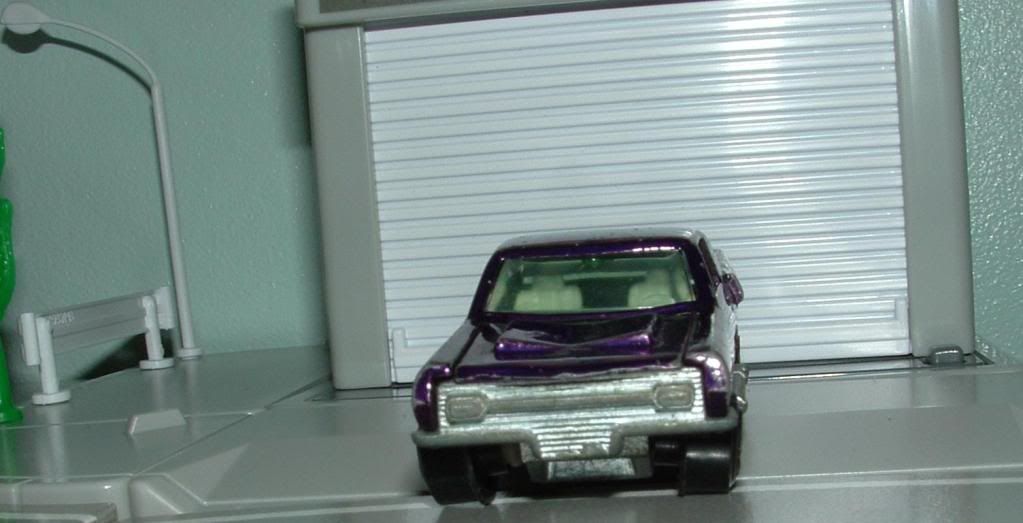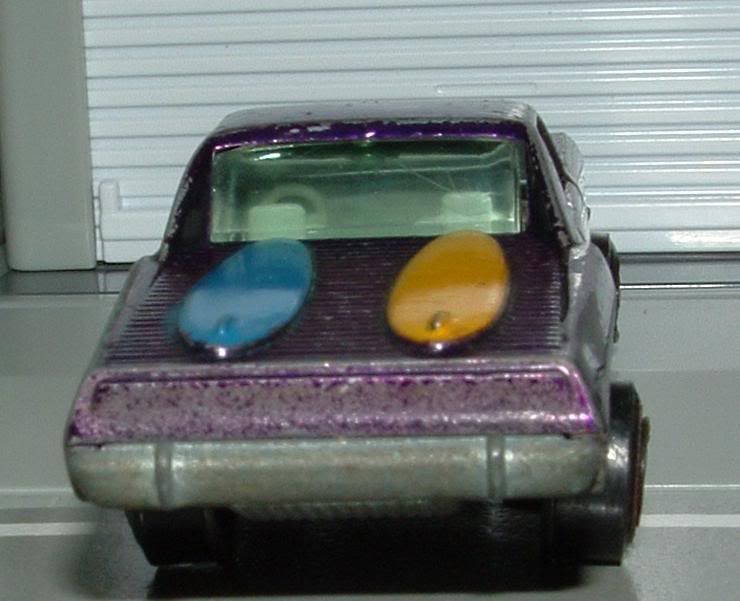
A blog focusing on 1/64 diecast from such popular brands as Hot Wheels, Matchbox, Johnny Lightning, M2 Machines, GreenLight, Tomica, Yat Ming, Majorette, MotorMax, Siku, Corgi, Guisval, Playart, Ertl, Zylmex, Racing Champions, & many more. Swifty's Garage features a daily Car Of The Day and news updates from your favorite brands!
Monday, February 28, 2011
Car Of The Day: February 28, 2011
Today's car of the day is Hot Wheels' 2004 Dodge Neon drag car.
The Chrysler Neon (known in North America as the Dodge Neon and the Plymouth Neon) is a compact front wheel drive car introduced in January 1994 for the 1995 model year by Chrysler Corporation's Dodge and Plymouth brands. It was branded as a Chrysler model in Japan, Europe, and Australia (where it was the first car to be sold as a Chrysler since 1981) export markets, as well as briefly in Mexico, Canada, and Egypt. It replaced the Dodge Shadow and Plymouth Sundance & Duster models and the Dodge & Plymouth Colt. The two-door model also replaced the Plymouth Laser in Plymouth's lineup. The Neon was offered in multiple versions and configurations over its production life, which ended on September 23, 2005.
For more information and pictures of the real car please visit: Dodge Neon
This is the only small scale Neon I am aware of. Pity that it bears so little resemblance to the real car. Starting off, the second generation Neon wasn't available as a coupe (sedans only) so there's one strike against it already. All of the drag racing add-ond ans the hole in the front fascia only hinder the casting further in my opinion. I've never seen the real model this is based on, and it probably is faithful to the racer in question, but it leaves fans of stock automobiles out in the cold. Much like the first generation Ford Probe (available only as a funny car from Hot Wheels and others) certain cars seem destined to go through life unrepresented in small scale despite being fairly popular with the right crowds at the right time. The first generation Probe, Neon, and Beretta (Zylmex, Hot Wheels, and Muscle Machines all did hot rod/drag versions) jump to mind.
Sales of the second generation model started with model year 2000 and production ended with the 2005 model year. The second generation Neon was only available as a four-door sedan. In some global sales regions, including the U.S., the sole engine was the 2.0 L SOHC engine, the power output remaining at 132 hp (98 kW). An optional Magnum engine configuration (with an active intake manifold) that produced 150 hp (110 kW) was available. Both engines had a redline of 6762 rpm.
The second generation was more refined than the first generation car. It was advertised that the second generation Neon had over 1,000 refinements from the original generation. The first generation's frameless windows were replaced with a full-framed door. Other NVH refinements were implemented. The new interior and greater size increased weight. The DOHC ECC engine was no longer available.
In 2001, The R/T trim returned after a one-year hiatus. The R/T consisted of a new 150 hp (110 kW) SOHC Magnum 2.0 L Engine, 16 in (41 cm) wheels, spoiler, dual chrome exhaust tips, quicker steering box and stiffer springs. The 2001 and 2002 R/Ts had a flat, 'hammerhead' spoiler. From 2000-2003, the R/T was sold as a Chrysler in Europe. The Neon was offered with a Sport package for the 2001 model year only. It consisted of an R/T wing, R/T 16 in (41 cm) wheels, R/T springs, white instrument cluster and R/T steering box. It was an R/T visually except for the lack of dual exhaust, R/T lower mouldings, fog lamps and R/T exclusive front bumper. The Sport only came equipped with the base model's 132 hp (98 kW) engine and was available with an automatic transmission (unlike the manual-only R/T model). 2001 was the last year for the Plymouth Neon, and the Plymouth brand as well, the last Plymouth Neon (which also was the last Plymouth), a silver four-door sedan, rolled off the assembly line on June 28, 2001.
The former Dodge and Plymouth Neon were briefly sold under the Chrysler name in Canada from 2000–2002, until being renamed as Dodge SX 2.0 for 2003. In Europe, Australia, Mexico, and Asia, the car had always been sold as a Chrysler, as Dodge and Plymouth passenger cars were not marketed outside the U.S. and Canada at the time. Besides the 2.0 L engine, it used the same Tritec 1.6 L unit found in the MINI prior to 2007. The 1.6 L unit is a variation of the 2.0 L SOHC engine designed by Chrysler and built by Tritec.
Originally, the second generation Neon featured a five-speed manual transmission using the former ACR gear ratios to improve acceleration. However, this hurt gas mileage and made the car noisier on the highway, and eventually the original gear ratios were restored. A four-speed automatic was offered in the Neon for the 2002 model year, with gearing changed the following year.
The Neon's name was changed to SX 2.0 in Canada in 2003. In Australia and Canada, the Chrysler Neon was discontinued in 2002. In 2002, the front clip was changed to match the R/T and ACR front clip with the exception of missing a lower lip. The Neon was facelifted again for 2003 with large "crosseyed" headlights and crosshair grille. The ACR model was discontinued for 2003; the R/T model for 2004. The Chrysler Neon continued to be sold in Europe until 2004.
In Brazil, the Neon was marketed as a luxury mid-size sedan; for Mexico it was a competitor to the Ford Escort, and sold as a Chrysler with either the 1.6 or 2.0 L engine and European-style taillights (with separate amber indicator lights), except for the R/T model, which was a Dodge, with U.S.-style taillights.
For the Dutch market, the Neon proved more successful than the rest of the Continent. Trim levels were 2.0 LX and 2.0 SE. However, some grey import versions came in from Mexico.
Car Of The Day: February 27, 2011 (Belated)
Today's car of the day is Matchbox's 1969 Volvo P1800.
The project was started in 1957 because Volvo wanted a sports car, despite the fact that their previous attempt, the P1900, had been a disaster, with only 68 cars sold. The man behind the project was an engineering consultant to Volvo, Helmer Pettersson, who in the 1940s was responsible for the Volvo PV444. The design work was done by Helmer's son Pelle Pettersson, who worked at Pietro Frua at that time. Volvo insisted it was an Italian design by Frua and only officially recognized that Pelle Pettersson designed it in 2009. The Italian Carrozzeria Pietro Frua design firm (then a recently acquired subsidiary of Ghia) built the first three prototypes, designated: P958-X1, P958-X2 and P958-X3.
In December 1957 Helmer Petterson drove X1, (the first hand-built P1800 prototype) to Osnabrück, West Germany, headquarters of Karmann. Petterson hoped that Karmann would be able to take on the tooling and building of the P1800. Karmann's engineers had already been preparing working drawings from the wooden styling buck at Frua. Petterson and Volvo chief engineer Thor Berthelius met there, tested the car and discussed the construction with Karmann. They were ready to build it and this meant that the first cars could hit the market as early as December 1958. But in February, Karmann's most important customer, Volkswagen VAG, forbade Karmann to take on the job. They were afraid that the P1800 would compete with the sales of their own cars, and threatened to cancel all their contracts with Karmann if they took on the coachbuilding of this car. This setback almost caused the project to be abandoned.
Other German firms NSU, Drautz and Hanomag were contacted but none of them were selected because Volvo did not believe these firms met their manufacturing quality control standards.
It began to appear that Volvo might never produce the P1800. This motivated Helmer Petterson to obtain financial backing from two financial firms with the intention of buying the components directly from Volvo, and marketing the car himself. At this point Volvo had made no mention of the P1800 and the factory would not comment. Then a press release surfaced with a photo of the car, putting Volvo in a position where they had to acknowledge the car's existence. These events influenced the company to renew its efforts, the car was presented to the public for the first time at the Brussels Motor Show in January 1960 and Volvo turned to Jensen Motors whose production lines were under capacity, and they agreed to a contract of 10,000 cars. The Linwood, Scotland, body plant of manufacturer Pressed Steel was in turn contracted by Jensen to create the unibody shell, which then shipped via rail to be assembled at Jensen in West Bromwich, England. In September 1960, the first production P1800 (for the 1961 model year) left Jensen for an eager public.
The engine provided was the B18 (B for the Swedish word for gasoline: Bensin; 18 for 1800 cc displacement) with dual SU carburettors, producing 100 hp (75 kW). This variant (named B18B) had a different camshaft from, and higher compression than, the slightly less powerful twin-carb B18D used in the contemporary Amazon 122S. The 'new' B18 was actually developed from the pre-existing B36 V8 engine employed in Volvo trucks at the time. This cut production costs, as well as furnishing the P1800 with a strong engine boasting five main crankshaft bearings. The B18 was matched with the new and more robust M40 manual gearbox through 1963. From 1963 to 1972 the M41 gearbox with electrically actuated overdrive was a popular option. Two overdrive types were used, the D-Type through 1969, and the J-type through 1973. The J-type had a slightly shorter ratio of 0.797:1 as opposed to 0.756:1 for the D-type. The addition of this overdrive gave the 1800 series a defacto fifth gear, allowing it greater fuel efficiency and decreased drivetrain wear. Cars sold without overdrive had a numerically lower geared differential, which had the interesting effect of giving them a somewhat higher top speed (just under 120 mph) than the more popular overdrive models. This was because the non-overdrive cars could reach the engine's redline in top gear, while the overdrive-equipped cars could not, giving the latter a top speed of roughly 110 mph (177 km/h).
For more information and pictures of the real car please visit: Volvo P1800
Here's a Volvo that even Ivan should love- the P1800. What a gorgeous car! The Matchbox model is not perfect (I think the Corgi captured the lines of the real car better), but the color, the detailing, and the tampos are perfect. I can't understand why this casting is such a pegwarmer here. I can grab both this color and the red one side by side at K-Mart right now.
A 1966 Volvo 1800S owned by Irv Gordon of East Patchogue, New York, USA has the Guinness world record for highest mileage in the same vehicle he has been driving for more than 40 years. It had covered in excess of 2,219,751 miles (3,572,343 km) by March 2004, and passed the 2,600,000-mile (4,180,000 km) mark by October 2007. As of November, 2009, the car is at 2.7 million miles and the owner is now targeting the three million mile mark.
He has driven about 26,000 of those miles outside of the U.S., in Canada and Mexico, as well as in Europe. "In Sweden, we drove to Volvo's global headquarters to see where the P1800 was born", Gordon said.
On April 2, 2002, Gordon and his 1800S were guests on The Tonight Show with Jay Leno, after reaching the two million milestone.
As of July 2010, Gordon reached 2.8 million miles for his 70th birthday, and announced that he hopes to reach 3 million by the time he turns 73. That feat will require him to drive an average of around 5,500 miles per month.
Saturday, February 26, 2011
Car Of The Day: February 26, 2011
Today's car of the day is Yat Ming's 1979 Chevrolet Corvette.
The Chevrolet Corvette (C3) is a sports car produced by the Chevrolet division of General Motors for the 1968 through 1982 model years. Corvette chief Zora Arkus-Duntov wanted a striking new Corvette; although engines and chassis components were mostly carried over from the previous generation, its body and interior were new. "Though initially flawed, the 1968 like the 1958, would improve and mature into a car precisely right for its time." The so-called Shark was produced during one of the most troubled periods in America: civil unrest, burgeoning federal guidelines, fuel economy and pollution regulations, oil embargoes, rising fuel and insurance costs, runaway inflation, and a lingering recession. Through it all the third generation Corvette continued to set new sales records with an all-time high of 53,807 produced for the 1979 model year.
For more information and pictures of the real car please visit: Chevrolet Corvette
The Corvette was heavily restyled for the 1978 model year, and that model carried over to 1979 virtually unchanged. I'm only calling this one a 1979 based on the t-tops since they were a limited option in 1978 as opposed to a regular one as in 1979. 1980 saw a facelift to the front and rear fascias, so this is not an '80-'82. One would think the racing #80 might refer to the model year (like it does on various Jada race cars) but Yat Ming's racing numbers almost always go by the last two digits of the model's number. In this case, this is #1080.
1978 was the Corvette's twenty fifth anniversary, and all 78's featured silver anniversary nose and fuel door emblems. A new fastback rear window was the most dramatic and noticeable styling change, giving the ten-year-old C3 Corvette body style a fresh lease on life. The fixed-glass fastback benefited both aerodynamics and increased the useable luggage space behind the seats while improving rearward visibility in the bargain. A shade was installed that could be pulled forward to cover the rear compartment to protect cargo and carpet against the unrelenting sun. The tachometer and speedometer were redesigned to match the new “aircraft styled” center console and gauge cluster first seen the previous year. Redesigned interior door panels were also new as well as an actual glove box was added in front of the passenger seat, replacing the map pockets of previous years. Available options now included power door locks, a power antenna, dual rear speakers and a CB radio. The optional convenience group, introduced the previous year, now included intermittent (delay) wipers, floor mats, and the passenger side vanity mirror was an upgraded illuminated unit. The base L-48 engine generated 185 hp (138 kW); Those destined for California or high altitude areas produced 175 hp (130 kW). Gone was the chrome-plated ignition shielding over the distributor, replaced with a metal-lined black plastic unit. The single-snorkel air intake used since 1976 was changed to a dual-snorkel set-up on L-82 equipped cars helping to boost that output to 220 hp (164 kW). L-82 engines were also now fitted with an aluminum intake manifold which saved 24 pounds compared to the cast iron unit of previous years. The Corvette converted to metric tires with the P225/70R15 as standard. Wider P255/60R15 tires were available as an option and required fender trimming from the factory for clearance. The fuel tank capacity increased from 17 gal to 24 gal on all cars. To make room for the larger tank, a smaller (P195/80D15) space saver spare tire was utilized.
Two special editions were offered to celebrate Corvette's 25th year. Before he retired, Bill Mitchell had suggested a Silver Anniversary model in his favorite color-silver, appropriately enough-and it appeared as the $399 B2Z option package. The first two-tone paint option offered since 1961, it presented silver over a gray lower body with a separating pinstripe, plus aluminum wheels and dual "sport" outside mirrors as mandatory options, which added another $380 to the cost. 6502 Indy-500 Pace car replica editions were produced featuring Black/silver two-tone paint, front and rear spoilers, mirror-tint roof panels and contoured sport seats. Reviewers praised the car's classic strengths including its impressive straight-line numbers, especially an L48/automatic's 7.8 second 0-60 time and top speed of 123 mph (198 km/h), and noted its more refined, less rattling ride. On the other hand, they continued to note its weaknesses, like a rear-end that tended to step out during sharp maneuvers and a cabin that was still cramped and uncomfortable.
Road & Track took a 1978 L82 to 60 mph (97 km/h) in just 6.6 seconds, 127 mph (204 km/h) flat out, and covered the quarter-mile in 15.3 seconds @ 95 mph.
1979 saw the crossed-flag emblems on the nose and fuel door revert to the those seen on the '77 model. Three popular features introduced on the '78 pace car replicas made it into this year’s production; The new bucket seats, the front and rear spoiler package, and the glass roof panels. The new lightweight “high back” seats were made standard equipment. The new seats had better side bolster, provided easier access to the rear storage area, and the seat pair resulted in a weight reduction of about 24 pounds. The bolt-on front and rear spoilers were offered as an option and nearly 7,000 cars were ordered so equipped. Functionally, the spoilers decreased drag by about 15% and increased fuel economy by about a half-mile per gallon. A bigger hit were the glass mirror-tint roof panels, now a regular option, with nearly 15,000 cars so fitted despite their costing $365. All T-tops were now wired into the standard anti-theft alarm system. Tungsten-halogen high-beam headlights became standard as did an AM-FM radio, and for the first time a cassette tape player could be added as a $234 option. Heavy duty shock absorbers could now be ordered without the full Gymkhana suspension. An auxiliary electric engine cooling fan was first installed, but only on L-82 equipped cars with air conditioning. Rocker panels and rear window trim were painted black. Output for all engines increased due to new "open flow" mufflers. The dual-snorkel air intake introduced on L-82 cars the previous year was now fitted to all cars and the base engine now generated 195 hp (145 kW). The optional L-82 engine increased to 225 hp (168 kW). The M21 close ratio 4-speed transmission continued as an option at no cost but, as in previous years, could only be mated to L-82 engines. The wide ratio 4-speed continued to be available for all cars. Noteworthy is that about 82% of the cars were ordered with manual transmissions in 1968. In '79, less than 20% of the cars were delivered with manual gearboxes. This year reached an all-time high in Corvette popularity. Production hit its peak in 1979 at 53,807, a record that stands to this day.
Sport seats (from previous year pace-car); front & rear spoilers optional, glass t-tops optional; New interior comfort features; highest Corvette sales year to date.
Friday, February 25, 2011
Car Of The Day: February 25, 2011
Today's car of the day is Maisto's 1978 BMW M1.
The BMW M1 was a sports car that was produced by German automaker BMW from 1978 to 1981.
In the late 1970s, Italian manufacturer Lamborghini entered into an agreement with BMW to build a production racing car in sufficient quantity for homologation. The result was sold to the public, from 1978 to 1981, as the BMW M1. It was the only mid-engined BMW to be mass produced. It employed a twin-cam M88/1 3.5 L 6-cylinder petrol engine with Kugelfischer mechanical fuel injection. A version of this motor was later used in the South African version of the BMW 735i, of which 209 examples were built between 1984 and 1986, as well as the E24 BMW M6/M635CSi and E28 BMW M5. The engine had six separate throttle butterflies, four valves per cylinder and produced 277 PS (204 kW; 273 hp) in the street version, giving a top speed of 260 km/h (160 mph). Turbocharged racing versions were capable of producing around 850 hp (634 kW).
The M1 coupe was hand-built between 1978 and 1981 under the Motorsport division of BMW as a homologation special for sports car racing. The body was designed by Giugiaro, taking inspiration from the 1972 BMW Turbo show car. Originally, BMW commissioned Lamborghini to work out the details of the car's chassis, assemble prototypes and manufacture the vehicles, but Lamborghini's financial position meant that BMW reassumed control over the project in April 1978, after seven prototypes were built. Only 456 production M1s were built, making it one of BMW's rarest models. The spirit of the M1 lived on in the first-generation M5, as both models shared the same (though slightly modified) engines.
The M1 had various successes in motorsports. In 2004, Sports Car International named the car number ten on the list of Top Sports Cars of the 1970s.
The M1 is not related to BMW's current 1-series compact executive car.
For more information and pictures of the real car please visit: BMW M1
Here's a nice Maisto courtesy juantoo3. Thanks Wes! This is a copy of the Matchbox casting, like many early Maistos, but the end result is fairly nice. It's screaming for better wheels though.
In 1979 the head BMW Motorsport, Jochen Neerpasch, devised a one-make championship using racing modified M1s. The series was created to aid BMW in building enough M1s to enter the Group 4 classification in the World Championship for Makes. The new series, known as the Procar BMW M1 Championship, served as a support series for Formula One, and included many current Formula One drivers in identical cars.
The series ran for two years, with Niki Lauda winning the 1979 season, and Nelson Piquet the 1980 season. After BMW met the standards for Group 4, the Procars were used by various teams in the World Championship as well as other national series.
Thursday, February 24, 2011
Car Of The Day: February 24, 2011
Today's car of the day is Hot Wheels' 1986 Porsche 930.
The 930 (usually pronounced nine-thirty) was a sports car built by Porsche, 930 actually being the "type number" for the pre-964 generation 911 Turbo produced between 1975 and 1989. It was Porsche's top-of-the-range model for its entire production duration and at the time of its introduction the fastest production car available in Germany.
For more information and pictures of the real car please visit: Porsche 930
I just want to add this disclaimer before I begin: I actually like this particular model in this color and with this tampo scheme. No, you're not getting a repeat of yesterday, I do like this one too. Since we had a recent discussion on the forum regarding the Hot Wheels cars with "Screamer" wheels I felt it was time to feature one of the two such models in my collection. In addition to the wheels (which are not flattering to a Porsche) the metallic lime green paint and loud tampos are a distraction. Anyone who painted a real 930 like this would likely be committed to the nearest asylum, but for Hot Wheels in the 1990s, this was business as usual.
Porsche began experimenting with turbocharging technology on their race cars during the late 1950s, and in 1972 began development on a turbocharged version of the 911. Porsche originally needed to produce the car in order to comply with homologation regulations and had intended on marketing it as a street legal race vehicle like the 1973 Carrera 2.7 RS. When the homologation rules changed, Porsche continued to develop the car anyway, deciding to make it a fully-equipped variant of the 911 that would top the model range and give Porsche a more direct competitor to vehicles from Ferrari and Lamborghini, which were more expensive and more exclusive than the standard 911. Although Porsche no longer needed the car to meet homologation requirements, it proved a viable platform for racing vehicles, and became the basis for the 934 and 935 race cars. Ferdinand "Ferry" Porsche, who was running the company at the time, handed development of the vehicle over to Ernst Fuhrmann, who adapted the turbo-technology originally developed for the 917/30 CAN-AM car to the 3.0 litre flat-six from the Carrera RS 3.0, creating what Porsche internally dubbed as 930. Total output from the engine was 260 PS (191 kW; 256 hp), much more than the standard Carrera. In order to ensure that the platform could make the most of the higher power output, a revised suspension, larger brakes and stronger gearbox became part of the package, although some consumers were unhappy with Porsche's use of a 4-speed whilst a 5-speed manual was available in the "lesser" Carrera. A "Whale-Tail" rear spoiler was installed to help vent more air to the engine and help create more downforce at the rear of the vehicle, and wider rear wheels with upgraded tires combined with flared wheelarches were added to increase the 911's width and grip, making it more stable.
Porsche badged the vehicle simply as "Turbo" (although early U.S. units were badged as "Turbo Carrera") and debuted it at the Paris Auto Show in October 1974 before putting it on sale in the spring of 1975; export to the United States began in 1976.
The 930 proved very fast but also very demanding. The 911 was prone to oversteer because of its rear engine layout and short wheelbase; combining those traits with the power of the turbocharged motor, which exhibited significant turbo-lag, meant driving the car required more skill to drive at the edge of its (higher) level of performance. Even though the rear engine layout provided superior traction, sudden bursts of power to the rear wheels in mid-corner could break the tires loose, causing the car to literally spin out of control. This effect was amplified if an unexperienced driver would instinctively lift the throttle in reaction. The vehicle needed to be kept at high revs during spirited driving to minimise the turbo lag. Skilled drivers quickly learned how to drive the 930 properly, and with that knowledge came the ability to drive the car above and beyond the levels of most other sports cars. Nevertheless, some fatal accidents resulted in product liability law suits brought against Porsche in the US, where Ralph Nader had made his name criticizing the rear engine-rear wheel drive layout of the Chevrolet Corvair.
Porsche made its first and most significant upgrades to the 930 for 1978, enlarging the engine to 3.3 litres and adding an air-to-air intercooler. By cooling the pressurized air charge, the intercooler helped increase power output to 300 hp (DIN); the rear 'whale tail' spoiler was re-profiled and raised slightly to make room for the intercooler. Porsche also upgraded the brakes to units similar to those used on the 917 racecar.
Changing emissions regulations in Japan and the U.S. forced Porsche to withdraw the 930 from those markets in 1980. It remained, however, available in Canada. Believing the 928 would eventually replace the 911, Fuhrmann cut-back spending on the model, and it was not until Fuhrmann's resignation the company finally committed the financing to re-regulate the car.
The 930 remained available in Europe, and for 1983 a 330 PS (243 kW; 325 hp) performance option became available on a build-to-order basis from Porsche. With the add-on came a 4-pipe exhaust system and an additional oil-cooler requiring a remodelled front spoiler and units bearing the add-on often featured additional ventilation holes in the rear fenders and modified rockers.
Porsche offered a "Flachbau" ("slantnose") 930 under the "Sonderwunschprogramm" (special order) program beginning in 1981, an otherwise normal 930 with a 935-style slantnose instead of the normal 911 front end. Each Flachbau unit was handcrafted by remodeling the front fenders. So few were built that the slantnose units often commanded a high premium over sticker, adding to the fact that they required a premium of up to 60 per cent (highly indivdualized cars even more) over the standard price. Several sources claim the factory built 948 units. The Flachbau units delivered in Europe usually featured the 330 hp (246 kW) performance kit.
928 sales had risen slightly by the 1985 model year, but there was still some question as to if it were truly capable of superseding the 911 as the company's premier model, and for 1986 Porsche re-introduced the 930 to the Japanese and U.S. markets, now featuring an emission-controlled engine producing 282 PS (207 kW; 278 hp). At the same time Porsche introduced the Targa and Cabriolet variants, both of which proved popular.
Porsche discontinued the 930 after model year 1989 when its underlying "G-Series" platform was being replaced by the 964. '87 models were the first versions of the 930 to feature the G50 transmission, a 5-speed manual transmission. A turbo version of the 964 officially succeeded the 930 in 1991 with a modified version of the same 3.3 litre flat-6 engine and a 5-speed transmission.
Wednesday, February 23, 2011
Car Of The Day: February 23, 2011
Today's car of the day is Matchbox's 1982 Pontiac Firebird racer.
The third generation F-body weighed less than its predecessor and offered sleek, aerodynamic styling that was particularly reflected by the Firebird. GM's CCC (Computer Command Control) engine control system also continued to evolve, simultaneously increasing engine performance, raising fuel economy, and lowering emissions. This combination of factors helped the Third Generation Firebird to re-energize its fading pony car image. By the end of the 1980's, thanks to world class aerodynamics and state of the art computerized engine management, a Firebird would be the fastest American car available at any price.
For more information and pictures of the real car please visit: Pontiac Firebird
I just want to add this disclaimer before I begin: I actually like this particular model in this color and with this tampo scheme. It's probably the color in particular, but I digress. What we have here is an absolute trainwreck from Matchbox. The casting dates to the Universal era and their policy of altering existing castings to get more mileage out of them (how we ended up with the AMX Pro Stocker, IMSA Mustang, IMSA RX-7, Dodge Challenger hot rod, and Chevy Stocker- based on the Javelin AMX, Boss Mustang, Mazda RX-7, Dodge Challenger, and Chevrolet Laguna stocker respectively). Unlike the others mentioned (with the possible exception of the RX-7/IMSA RX-7), this one existed alongside of it's stock counterpart, being a fairly recent model at the time. When the casting was modeified as much that could be recycled was (interior and glass), and the result is a racing car with a production car interior and rear window defrosters. Speaking of the racing modifications, exactly what series is this car supposed to represent? IROC was racing Camaros at the time, and the bulging fender flares and towering rear spoiler seem to be more at home on an IROC racer (or a NASCAR stocker). But the paint schemes this one was given (when they were racing themed and more tasteful than this) generally looked more endurance racing in appearance. Now, speaking of the paint scheme, the color is nice. The tampos? Well, this one is a Tyco era issue and it shows. This is why Matchbox was in sad shape for so many years- poor decisions were being made and the budgets were stretched far thinner than they should have been. Another example: the Challenger casting mentioned earlier had never been out of the line from the time it was issued, to the time it was modified, until the time Mattel took over. It from being a contemporary casting of the car when it was a year out of the showrooms to being used just as classic muscle car prices really started to skyrocket. I'm shocked Mattel didn't save this tooling because of that. The tooling for this Firebird (and its stock counterpart) likewise did not survive the transition from Mt. Laurel to El Segundo. As far as I know the last issue for either of the Firebird castings was a DARE car circa 2000.
The 3rd Generation of Firebirds took flight with three models: Firebird, Firebird S/E, and Firebird Trans Am. The Firebird was the base model, equivalent to the Camaro Sport Coupe; the Firebird S/E was the luxury version; and the Trans Am, the high performance Firebird. For 1982, the new Firebird and Camaro had been completely restyled, with the windshield slope set at a dramatic, wind cheating 62 degrees, (about 3 degrees steeper than anything GM had ever tried before), flush mounted side glass, and for the first time, a large, glass-dominated rear hatchback. Electronically controlled retractable headlamps, and a rounded hoodline and front fenders were the primary characteristics that distinguished the Firebird from its Camaro sibling and its previous Firebird incarnations. The Firebird would retain hidden headlamps until the end of all production in 2002. Pontiac had also hoped to drop the "Trans Am" moniker from the redesigned cars to save royalties paid to the SCCA for use of the name. Early promotional cars were marked "T/A" as an alternative, however it was decided that doing so might cause more problems than it was worth and the "Trans Am" nameplate remained. Still, with its dimensions reduced, wheel base shortened, and weight reduced, the Third Generation Firebird was also the closest yet in size to the original 1967 model. Road & Track selected the 1982 Firebird Trans Am as one of the "12 Best Cars" in the world (along with its cousin, the Camaro). It won "Best Sports GT" category in the $11,000 to $14,000 range (also along with the Camaro). Road & Track called the fuel-injected Trans Am "a dramatic improvement on its predecessors," accelerating from 0-60 in 9.2 seconds.
The new Firebird shrank to a 101-inch wheelbase, losing more than 8 inches in overall length, measured about an inch narrower, and weighed nearly 500 lb (227 kg) less than its 1981 predecessor. It also was the most aerodynamic production Firebird to date with a drag coefficient of 0.33. The new Trans Am took things a bit further, with a coefficient of .32. The Trans Am body would continue to improve aerodynamically over the years, and by 1985 would be the most aerodynamic vehicle to ever be released from General Motors with a 0.29 coefficient of drag. Wind tunnels were used to form the 3rd Gen F-Body's shape, and these aerodynamic developments were fully taken advantage of by Pontiac's design team. The sleek new car had a low slung front end which featured split grilles. They fed some air to the radiator but most of the air came from an air dam underneath the front bumper. Every piece of the car was designed to reduce drag. The newly designed side view mirror housings, made of light alloy metal, were almost cone shaped, with the point facing the wind. The windshield wipers were hidden under the hood with the air intake for the climate control system. It made for a smooth flow of air over the windshield. The retractable headlamps popped up from the leading edge of the hood. (The cars tended to outlive the plastic gears for the headlight doors, and since the dealers charged several hundred dollars for the repair, it was common to see firebirds driving around with one or both headlights stuck open during the day.) Smooth wheelcovers were available on the Trans Am, attached to turbine finned alloy wheels. A frameless, flush mounted, compound curved rear glass hatchback decklid provided 30.9 cu ft (0.87 m3). of cargo space with the rear seats folded, and an optional wiper. It provided no disturbance to the airflow over the back of the car. All of these features combined together to provide a low coefficient of drag. Up front, 10.5-inch-diameter (270 mm) power disc brakes were now made standard on all Firebird models. Taking styling cues from the 1981 design, the new car had full width tail lights, complete with a bird emblem in the center. The all-new suspension design was more advanced and aggressive than anything Detroit had offered previously, easily rivaling the Corvette's handling abilities, (but not it's sophistication). The front suspension utilized MacPherson struts, with inboard mounted coil springs and lower front control arms. Out back, rear coil springs and shocks were positioned between the body and solid rear axle, with twin rear lower control arms/trailing links and a torsion bar, replacing the old-fashioned leaf springs design used previously in the 2nd Gens. A huge torque arm was mounted from the transmissions tailshaft to the rear axle center to further stabilize the axle's tendency to twist.
The interior now featured aircraft inspired details and gauges, using both fake and real Torx head screws that fastened the dash and console trim panels. The large round gauges, black with white numerals, were very legible. The main controls were all within easy reach of the steering wheel, and with the optional Recaro seats, you could drive several hundred miles at a time without fatigue. The 1981 non-Formula 3 spoke steering wheel was re-used and featured a clear Firebird logo mounted in the center of the horn pad, with optional leather grip. Many power options could be had. Special Viscount "PMD" bucket seats were optional, featuring a small opening in the headrest and a PMD logo in the center of the backrest. Leather seats were also available on both the standard seats and Viscount "PMD" seats. A standard locking rear glovebox was mounted on the rear driver"s side of the cargo area, a mini spare tire was hidden behind the opposite panel on the passenger side. A lockable cargo door on the rear floor area and a retractable cargo area privacy shade were also available as options on all Firebirds.
Tuesday, February 22, 2011
Car Of The Day: February 2011
Today's car of the day is Automodelli's 1976 Dodge Charger.
In 1969, the 1966 Dodge Dart (long-wheelbase Valiant) four-door sedan was introduced as a new car. It had V8 power and a standard three-speed transmission, and was named car of the year by Auto Esporte in 1970. A two door coupe came out the next year.
The Dart competed with the Ford Galaxy for the high end of car buyers, with many becoming chaffeur driven, while the coupe appealed to younger buyers. There were Charger and Charger R/T versions, mainly Dart hardtops with the roofline extended to the trunk and speed-related items such as dual exhausts, four-on-the-floor shifter, mag wheels, and bucket seats. It was at the high end of Brazilian production performance, consistent with the Dart's relatively high price overall.
In 1972, more luxurious cars were featured at the auto show, and Dart styling moved away from its American counterparts, though the basic engineering remained the same. Production continued with few changes until the 1979 lineup, when the Dart name gave way to LeBaron for luxury and Magnum for sport (replacing Charger). Magnum was a status car according to Status magazine, partly because of covers attached to the rear side windows that hid the rear seat from view. Few Magnums were made and today they are rare.
The Dart peaked in 1972 and 1973, before the oil crisis, which changed tastes to more economical vehicles. In 1980, only 403 Darts were made, and they were halted the next year. It had been popular with a spacious interior without excessive width (the Galaxy's problem), and maintenance and durability helped. The lack of a six cylinder no doubt hurt its survival after the fuel crisis.
For more information and pictures of the real car please visit: Dodge Charger
This is definitely the first Automodelli featured for Car Of The Day to date, and I think it may also be the first resin model as well.
The Dodge Dart of Brazil came in several models. Produced from May 1969 to 1982, the early Darts were a copy of our US Dart and looked like a 1969 car. The Dart-based Charger R/T had swept back B pillars like the US 1968 Charger. In 1975, they were available with a 2-barrel 318 providing 198 hp (except Charger R/T, which had 215 hp from the same engine, and a four speed manual transmission rather than the three speed trans on the others). Features included power brakes and, on the two-door cars, reclining bucket seats and consoles. Options included TorqueFlite automatic (floor or column shift), front sway bar, dual exhaust, air conditioning, and power steering.
Chrysler sold its interest to Volkswagen, which produced the Dart until 1982. The name was changed to LeBaron (four-door) and Magnum (two-door).
This casting was created using the Johnny Lightning '69 Dodge Dart as a starting point. From there the car was modified from Dart to Charger with the addition of the flying buttress roofline and correct front fascia. A nice model, but the downsides are the price and the fact that the wheels do not roll. Both of the Automodellis in my collection are sadly stationary.
Monday, February 21, 2011
Car Of The Day: February 21, 2011
Today's car of the day is Topper Johhny Lightning's 1968 Chevrolet El Camino.
The Chevrolet El Camino is a coupe utility vehicle produced by the Chevrolet division of General Motors for the 1959–1960 model years in response to the success of its rival, Ford Ranchero. Production resumed for the 1964–1977 model years based on the Chevelle platform, continuing for the 1978–1987 model years based on the Malibu. Although based on corresponding Chevrolet car lines the vehicle is classified and titled in North America as a truck. GMC's badge engineered El Camino variant, the Sprint was introduced for the 1971 model year. Renamed Caballero in 1978, it too was produced through the 1987 model year. El Camino is Spanish for "the road" or, alternatively, "the path".
For more information and pictures of the real car please visit: Chevrolet El Camino
I don't have a whole lot of Toppers, which is why I was very pleasantly surprised to receive this one as an RAOK from bunkerjim at our get-together a few weeks back. Caught me totally by surprise and it's a beauty! I'd have run this as COTD sooner but try as I might, I am just not getting good pictures of this car out of my current camera. The camera has some issues and I suspect the reflective finish on this model isn't being picked up. Thank you, Jim!
The mid-1955 introduction of Chevrolet's stylish Cameo Carrier pickup helped pave the way for the El Camino. Although a truck in every sense, the Cameo offered an unprecedented array of car-like features; Two-tone paint, smooth V8 power, an automatic transmission, a relatively luxurious interior, power assists, and more were among its attractions. The Cameo no doubt inspired Dodge, International, and Ford to offer flush-side cargo boxes on some of their 1957 pickups. But Ford had another surprise in store for the competition in 1957. It was the Ranchero. The 1959 El Camino was Chevy's eventual answer to the Ford Ranchero. Chevrolet was locked into the third and final edition of its 1955 chassis/body program for 1957. Ford however had a totally new chassis and body that year making the timing right only for Ford. Chevrolet had a one-year body design for its 1958 passenger cars. It would still have been impractical to engineer a response to the relatively low-volume Ranchero, which Ford simply facelifted for 1958. Furthermore, Chevrolet's efforts on the truck front "were focused on releasing smooth-sided "Fleetside" pickups as more-practical midseason successors to the Cameo. By the time Chevrolet unveiled the El Camino, the full-size Ford Ranchero was already headed for the last roundup. The El Camino and Ranchero would compete only in the 1959 model year.
1968 introduced a longer El Camino, based on the Chevelle station wagon/4-door sedan wheelbase and shared Chevelle Malibu exterior and interior trims. The interior was revamped including cloth and vinyl or all-vinyl bench seats and deep twist carpeting. All-vinyl Strato bucket seats and center console were an $111 option. Power front disc brakes and Positraction were optional. A new, high performance Super Sport SS396 version was launched. The Turbo-Jet 396 had 325 bhp (242 kW) or 350 bhp (260 kW) versions. Returning to the official options list for the first time since late 1966 was the 375 bhp (280 kW) L78. It had solid lifters, big-port heads, and an 800-cfm Holley four-barrel on a low-rise aluminum manifold. A three-speed manual was standard with all engines, and a four-speed or automatic were optional.
1969 models showed only minor changes for 1969, led by more rounded front-end styling. A single chrome bar connected quad headlights, and a slotted bumper held the parking lights. New round instrument pods replaced the former linear layout. 1969 marked the first time that the legendary Chevrolet 350 V-8 was used in an El Camino. The Super Sport group included a 265- or 325-horsepower 396-cubic-inch V-8 beneath a double-domed hood, along with a black-out grille displaying an SS emblem. More potent editions of the 396 engine also made the options list, developing 350 or 375 horsepower (280 kW). Options included power windows and locks.
1970 models received sheetmetal revisions that gave the bodies a more squared-up stance, and interiors were also redesigned. 1970 saw the availability of a new SS396 which actually displaced 402 cu in (6.6 L) (although all emblems read 396). Chevrolet's largest and most-powerful engine of the time was also put into a select few El Caminos. The LS6 454 in³ engine, rated at 450 hp (336 kW) and 500 lb·ft (680 N·m) of torque, gave the El Camino 1/4 mile times in the upper 13 second range at almost 105 mph (169 km/h).
Subscribe to:
Posts (Atom)
